Preface
Installation packages required in this article are attached at the end. See the end for details
1. Overview of LAMP
1.LAMP architecture
LAMP architecture is one of the mature application modes of enterprise websites. It refers to a set of systems and related software that work together to provide dynamic Web site services and their application development environment.
LAMP is an abbreviation that includes the Linux operating system, Apache Web site server, MySQL database server, PHP (or Perl, Python) Web page programming language.
2. Key roles of LAMP components
(Platform) Linux: As the basis of the LAMP architecture, provides an operating system to support the Web site, provides better stability and compatibility with the other three components (AMP components also support Windows, UNIX, and other platforms).
(Foreground) Apache: As the front-end of the LAMP architecture, it is a powerful and stable Web server program that directly provides users with access to the Web site, sends Web pages, pictures and other file contents.
(Background) MySQL: As the backend of the LAMP architecture, it is a popular open source relational database system. In the application of enterprise website, business system, etc., all kinds of account information, product information, customer data, business data, etc. can be stored in MySQL database. Other programs can query and change these information through SQL statements.
(Intermediate Connection) PHP/Perl/Python: As three programming languages for developing dynamic Web pages, it is responsible for interpreting dynamic Web page files, communicating Web servers and database systems to work together, and providing an environment for developing and running Web applications. PHP is a widely used open source, multi-purpose scripting language that can be embedded in HTML, especially for Web application development.
When building the LAMP platform, the install order of each component is Linux, Apache, MySQL, PHP in turn. Apache and MySQL are not installed in a strict order. The PHP environment is usually installed last and is responsible for communicating Web servers and database systems to work together.
2. Apache httpd service compilation and installation
1. Close the firewall and transfer the packages needed to install Apache to the / opt directory
systemctl stop firewalld systemctl disable firewalld setenforce 0 httpd-2.4.29.tar.gz apr-1.6.2.tar.gz apr-util-1.6.0.tar.gz #The apr component packages are designed to support cross-platform applications of Apache and provide a base interface library, which can effectively reduce the number of concurrent connections, process and access congestion.

2. Installation Environment Dependency Package
yum -y install \ gcc #Compiler for C Language gcc-c++ \ #C++ Compiler make \ #Source Code Compiler (source code converted to binary file) pcre \ #pcre is a library of Perl functions, including Perl-compatible regular expression libraries pcre-devel \ #Interface development package for per1. expat-devel \ #Used to support Web site parsing of HTML, XML files perl #perl Language Compiler yum -y install gcc gcc-c++ make pcre pcre-devel expat-devel perl

3. Configure software modules
cd /opt/ tar zxvf apr-1.6.2.tar.gz tar zxvf apr-util-1.6.0.tar.gz tar jxvf httpd-2.4.29.tar.bz2 mv apr-1.6.2 /opt/httpd-2.4.29/srclib/apr mv apr-util-1.6.0 /opt/httpd-2.4.29/srclib/apr-util cd /opt/httpd-2.4.29/ ./configure \ --prefix=/usr/local/httpd \ #Specify the installation path for the httpd service program --enable-so \ #Enable dynamic loading module support to further extend httpd capabilities --enable-rewrite \ #Enable page address rewriting for site optimization, anti-theft chains and directory migration maintenance --enable-charset-lite \ #Start character set support to support pages encoded using a variety of character sets --enable-cgi #Enable CGI (Common Gateway Interface) scripting support to facilitate external expansion of application access to the site ./configure --prefix=/usr/local/httpd --enable-so --enable-rewrite --enable-charset-lite --enable-cgi
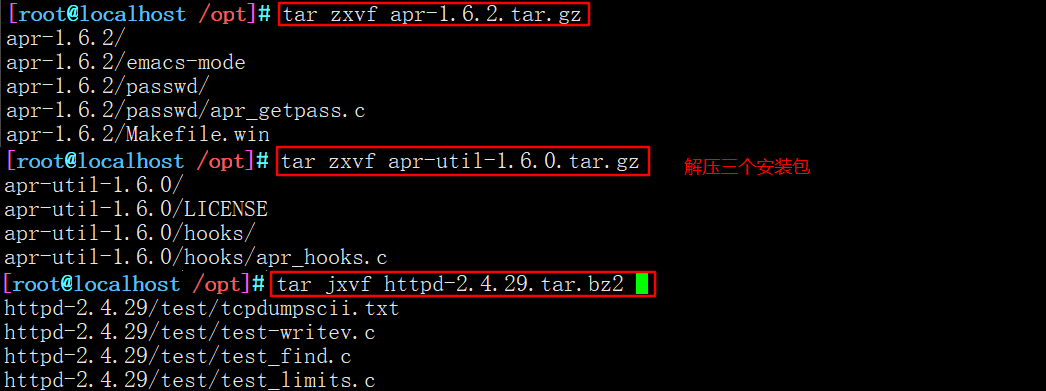

4. Compile and Install
make #Make-j 2 means open 2 cores and compile at the same time make install

5. Optimize the configuration file path and place the executable files of the httpd service in the directory of path environment variables for system identification
ln -s /usr/local/httpd/conf/httpd.conf /etc/ ln -s /usr/local/httpd/bin/* /usr/local/bin/

6. Add httpd system services
Method 1: cp /usr/local/httpd/bin/apachectl /etc/init.d/httpd #For service service service management chmod +x /etc/init.d/httpd vi /etc/init.d/httpd #!/bin/bash #Insert a new line before the first line to add the three lines # chkconfig: 35 85 21 #Level 35 Autorun 85th Startup 21st Shutdown # description: Apache is a World Wide Web server chkconfig --add httpd #Add httpd service to service manager systemctl start httpd.service or service httpd start

Method 2: vim /lib/systemd/system/httpd.service [Unit] Description=The Apache HTTP Server #describe After=network.target #Describe service categories [Service] Type=forking #Background operation mode PIDFile=/usr/local/httpd/logs/httpd.pid #PID file location ExecStart=/usr/local/bin/apachectl $OPTIONS #Start Services ExecReload=/bin/kill -HUP $MAINPID #Based on PID overload configuration [Install] WantedBy=multi-user.target systemctl start httpd.service systemctl enable httpd.service

7. Modify the httpd service configuration file
vim /etc/httpd.conf --52 That's ok--modify Listen 192.198.80.10:80 --197 That's ok--Uncomment, Modify ServerName www.kgc.com:80 --221 That's ok--Default Home Page Storage Path DocumentRoot "/usr/local/httpd/htdocs" --255 That's ok--Default Home Page File Name Settings DirectoryIndex index.html httpd -t or apachectl -t #Check the profile for configuration items that are incorrect cat /usr/local/httpd/htdocs/index.html systemctl restart httpd.service

8. Browser Access Validation
netstat -anpt | grep 80 echo "192.168.80.10 www.kgc.com" >> /etc/hosts http://192.168.121.11 http://www.kgc.com


3. Compilation and installation of mysqld service
1. Pass the package needed to install mysql to the / opt directory
mysql-5.7.17.tar.gz boost_1_59_0.tar.gz #Runtime libraries supporting c++.

2. Installation Environment Dependency Package
yum -y install \ gcc \ gcc-c++ \ ncurses \ #Dynamic Library for Graphic Interaction under Character Terminal ncurses-devel \ #ncurses Development Package bison \ #Grammar parser cmake #mysql needs to be compiled and installed with cmake yum -y install gcc gcc-c++ ncurses ncurses-devel bison cmake

3. Configure software modules
tar zxvf mysql-5.7.17.tar.gz tar zxvf boost_1_59_0.tar.gz cd /opt mv boost_1_59_0 /usr/local/boost #rename
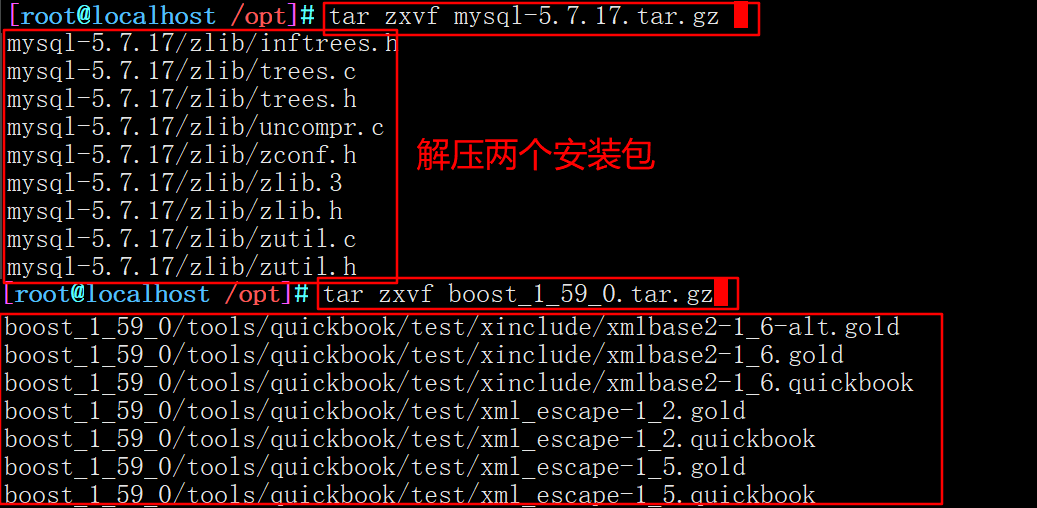
cd /opt/mysql-5.7.17/ cmake \ -DCMAKE_INSTALL_PREFIX=/usr/local/mysql \ #Specify the installation path for mysql -DMYSQL_UNIX_ADDR=/usr/local/mysql/mysql.sock \ #Specify the storage path for the mysql process listening socket file (database connection file) -DSYSCONFDIR=/etc \ #Specify the storage path for the configuration file -DSYSTEMD_PID_DIR=/usr/local/mysql \ #Specify the storage path for process files -DDEFAULT_CHARSET=utf8 \ #Specifies the character set encoding used by default, such as utf8 -DDEFAULT_COLLATION=utf8_general_ci \ #Specify the default character set proofing rules -DWITH_EXTRA_CHARSETS=all \ #Specify support for other character set encoding -DWITH_INNOBASE_STORAGE_ENGINE=1 \ #Install INNOBASE storage engine -DWITH_ARCHIVE_STORAGE_ENGINE=1 \ #Install ARCHIVE storage engine -DWITH_BLACKHOLE_STORAGE_ENGINE=1 \ #Install BLACKHOLE Storage Engine -DWITH_PERFSCHEMA_STORAGE_ENGINE=1 \ #Install FEDERATED storage engine -DMYSQL_DATADIR=/usr/local/mysql/data \ #Specify the storage path of the database file -DWITH_BOOST=/usr/local/boost \ #Specify the path to boost, if installed using the mysql-boost integration package -DWITH_BOOST=boost -DWITH_SYSTEMD=1 #Generate files for easy systemctl management

Storage Engine Options:
MYISAM, MERGE, MEMORY, and CSV engines are compiled to the server by default and do not need to be explicitly installed. Statically compile a storage engine to the server using -DWITH_engine_STORAGE_ENGINE= 1 Available storage engine values are ARCHIVE, BLACKHOLE, EXAMPLE, FEDERATED, INNOBASE (InnoDB), PARTITION (partitioning support), and PERFSCHEMA (Performance Schema)
Note: If there are errors in the CMAKE process, you need to put CMakeCache in the source directory after the error is resolved. Delete the txt file and CMAKE again, otherwise the error will remain
4. Compile and Install
make -j 4 && make install

5. Create mysql user
useradd -M -s /sbin/nologin mysql

6. Modify mysql configuration file
vim /etc/my.cnf #Delete the original configuration item and add the following again [client] #Client Settings port = 3306 socket = /usr/local/mysql/mysql.sock [mysql] #Server Settings port = 3306 socket = /usr/local/mysql/mysql.sock auto-rehash #Turn on auto-completion [mysqld] #Service Global Settings user = mysql #Set up administrative users basedir=/usr/local/mysql #Specify the installation directory for the database datadir=/usr/local/mysql/data #Specify the storage path of the database file port = 3306 #Specify Port character-set-server=utf8 #Set the server character set encoding format to utf8 pid-file = /usr/local/mysql/mysqld.pid #Specify pid process file path socket=/usr/local/mysql/mysql.sock #Specify the database connection file bind-address = 0.0.0.0 #Set the listening address, 0.0.0.0 means allow all, such as allowing multiple IP s to be separated by spaces skip-name-resolve #Disable DNS Resolution max_connections=2048 #Set the maximum number of connections for mysql default-storage-engine=INNODB #Specify the default storage engine max_allowed_packet=16M #Set maximum packet size received by database server-id = 1 sql_mode=NO_ENGINE_SUBSTITUTION,STRICT_TRANS_TABLES,NO_AUTO_CREATE_USER,NO_AUTO_VALUE_ON_ZERO, NO_ZERO_IN_DATE,NO_ZERO_DATE,ERROR_FOR_DIVISION_BY_ZERO,PIPES_AS_CONCAT,ANSI_QUOTES
Sql_ Common values for model are as follows:
NO_ENGINE_SUBSTITUTION
If the required storage engine is disabled or not compiled, an error is thrown. When this value is not set, replace it with the default storage engine and throw an exception
STRICT_TRANS_TABLES
In this mode, if a value cannot be inserted into a transaction table, the current operation is interrupted without restrictions on non-transaction tables
NO_AUTO_CREATE_USER
Prevent GRANT from creating users with empty passwords
NO_AUTO_VALUE_ON_ZERO
The self-growing column in mysql can start at 0. By default, growth columns start at 1, and you will get an error if you insert data with a value of 0
NO_ZERO_IN_DATE
Zero dates and months are not allowed
NO_ZERO_DATE
The mysql database does not allow zero date insertion, which throws an error instead of a warning
ERROR_FOR_DIVISION_BY_ZERO
In INSERT or UPDATE, if the data is divided by zero, an error instead of a warning is generated. MySQL returns NULL by default when data is divided by zero
PIPES_AS_CONCAT
Treat'|'as a string's connection operator instead of an or operator, similar to Oracle databases and Concat, the splicing function of strings
ANSI_QUOTES
Enable ANSI_ After QUOTES, you cannot quote a string in double quotes because it is interpreted as an identifier
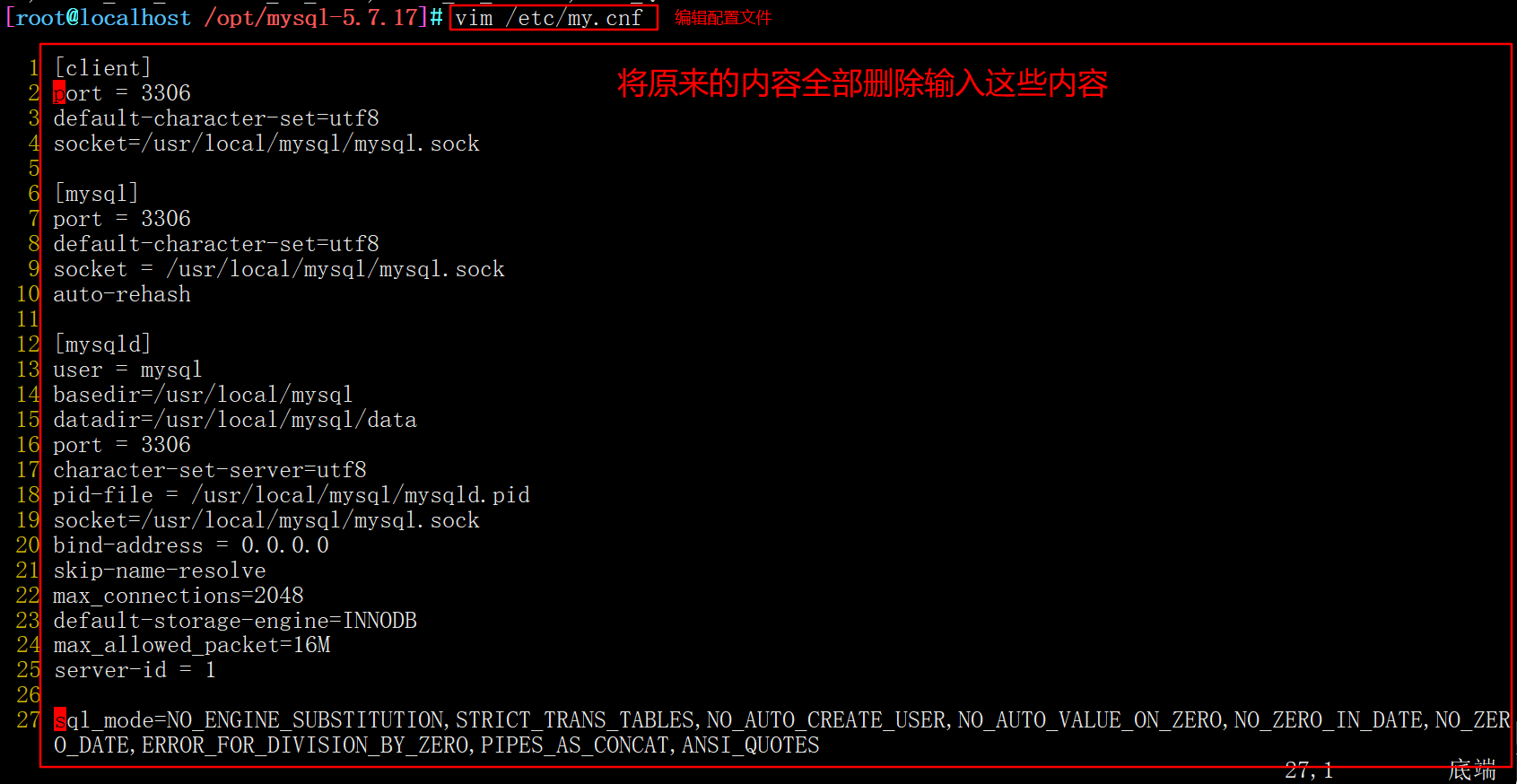
7. Change the ownership group of the mysql installation directory and configuration file
chown -R mysql:mysql /usr/local/mysql/ chown mysql:mysql /etc/my.cnf
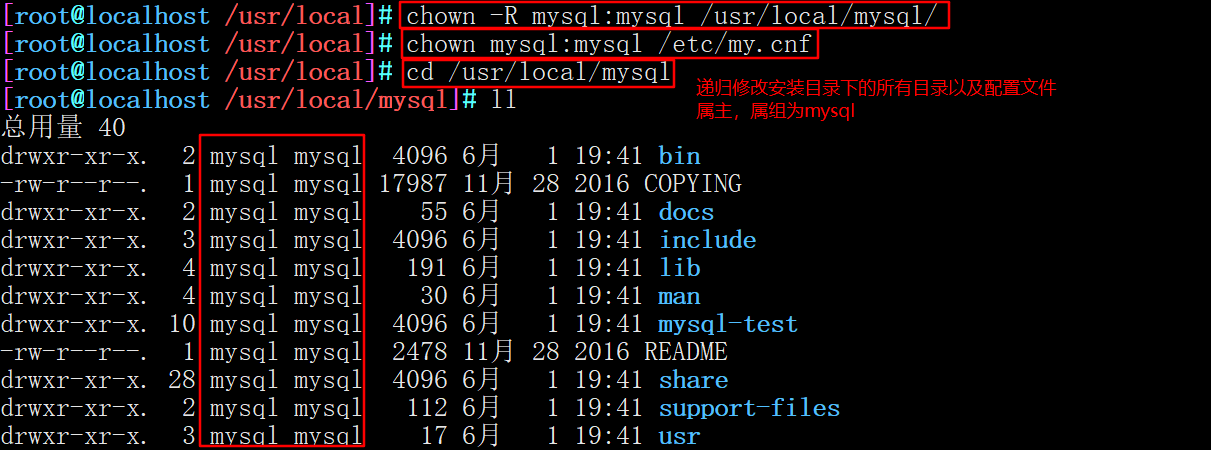
8. Setting path environment variables
echo 'export PATH=/usr/local/mysql/bin:/usr/local/mysql/lib:$PATH' >> /etc/profile source /etc/profile

9. Initialize the database
cd /usr/local/mysql/bin/ ./mysqld \ --initialize-insecure \ #Generate initialization password is empty --user=mysql \ #Specify administrative users --basedir=/usr/local/mysql \ #Specify the installation directory for the database --datadir=/usr/local/mysql/data #Specify the storage path of the database file
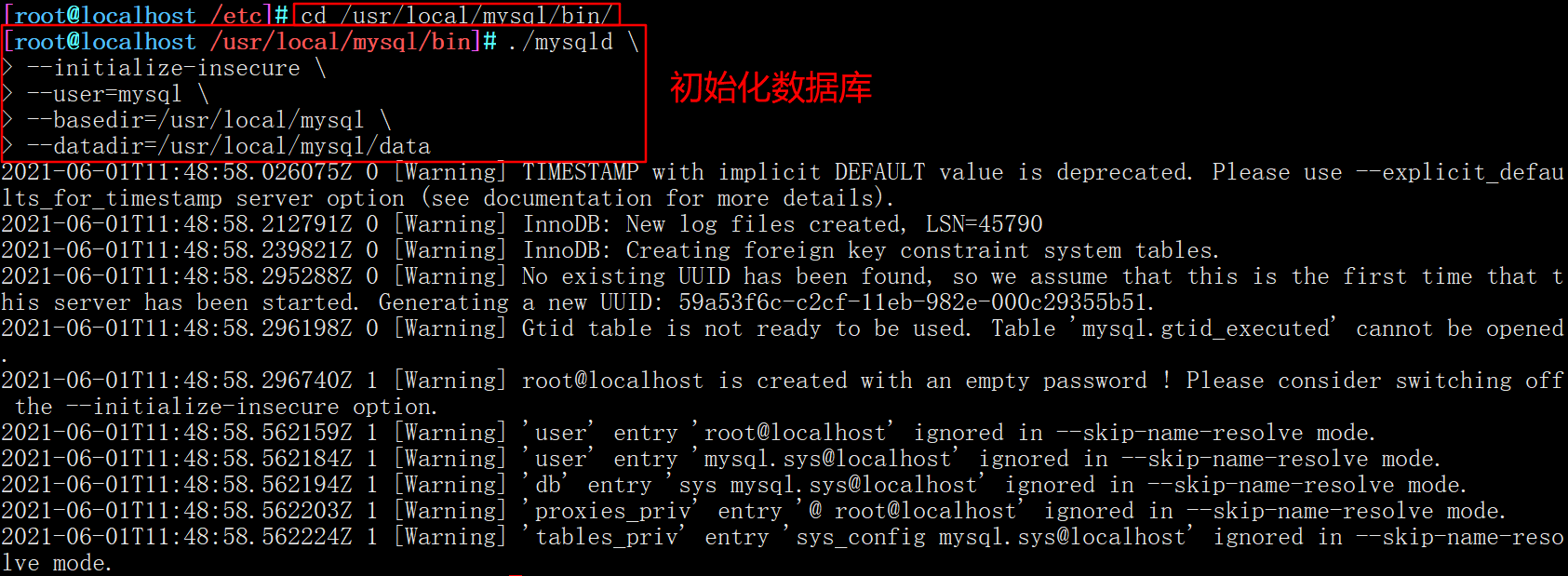
10. Add mysqld system service
cp /usr/local/mysql/usr/lib/systemd/system/mysqld.service /usr/lib/systemd/system/ #For systemctl service management systemctl daemon-reload #Refresh Identify systemctl start mysqld.service #Open Service systemctl enable mysqld #Start-up self-start netstat -anpt | grep 3306 #View Port

11. Modify mysql's login password
mysqladmin -u root -p password "666" #Set the password to 666 for the root account, prompting for the original password (empty)

12. Authorize remote login
mysql -u root -p grant all privileges on *.* to 'root'@'%' identified by '666'; #Grant root user remote login at all terminals with a password of 666 and operational privileges on all databases and all tables show databases; #View existing databases
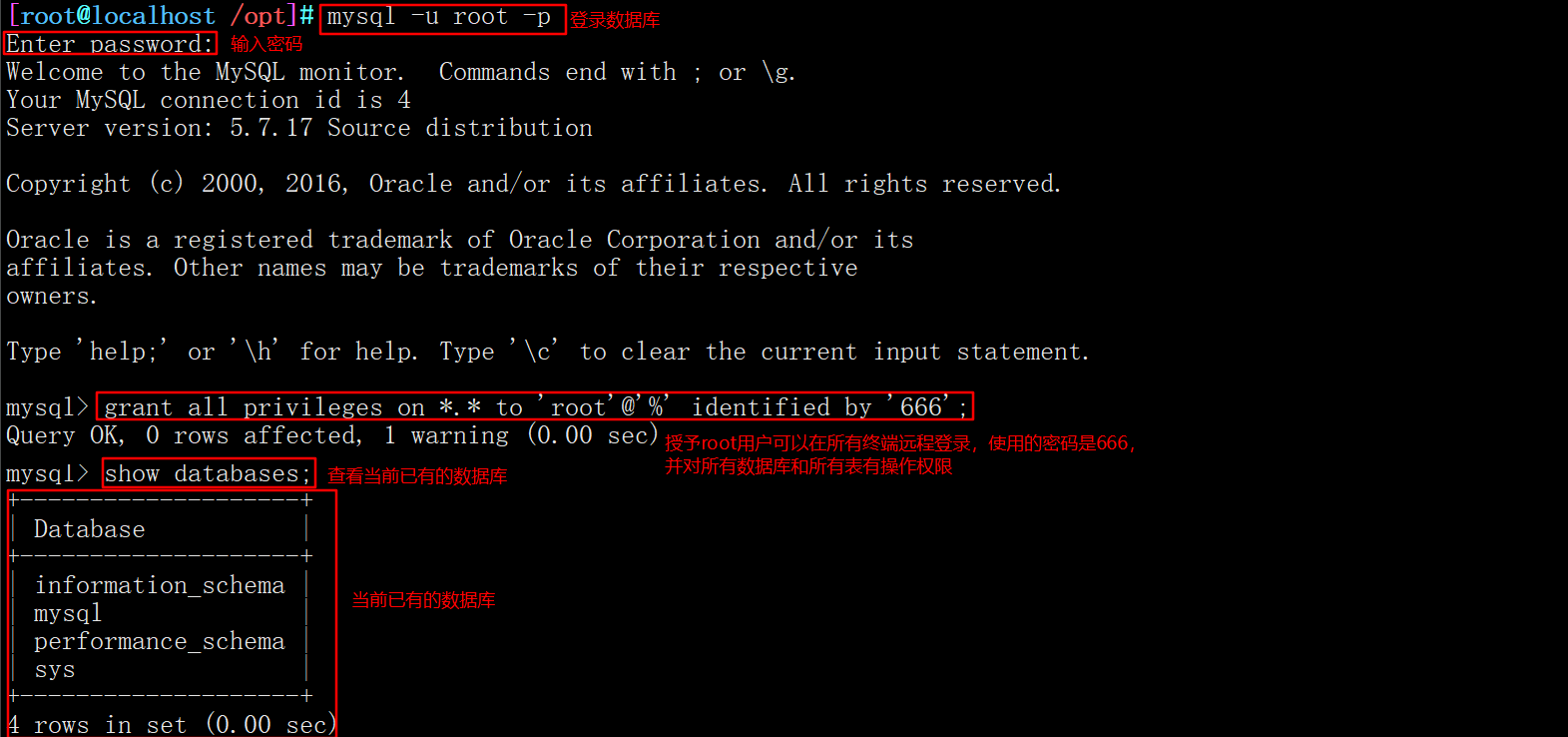
4. Compile and Install PHP Resolution Environment
1. Pass the package needed to install PHP to / opt directory
php-7.1.10.tar.bz2

2. Install GD Library and GD Library Associators to process and generate pictures
yum -y install \ gd \ libjpeg libjpeg-devel \ libpng libpng-devel \ freetype freetype-devel \ libxml2 libxml2-devel \ zlib zlib-devel \ curl curl-devel \ openssl openssl-devel
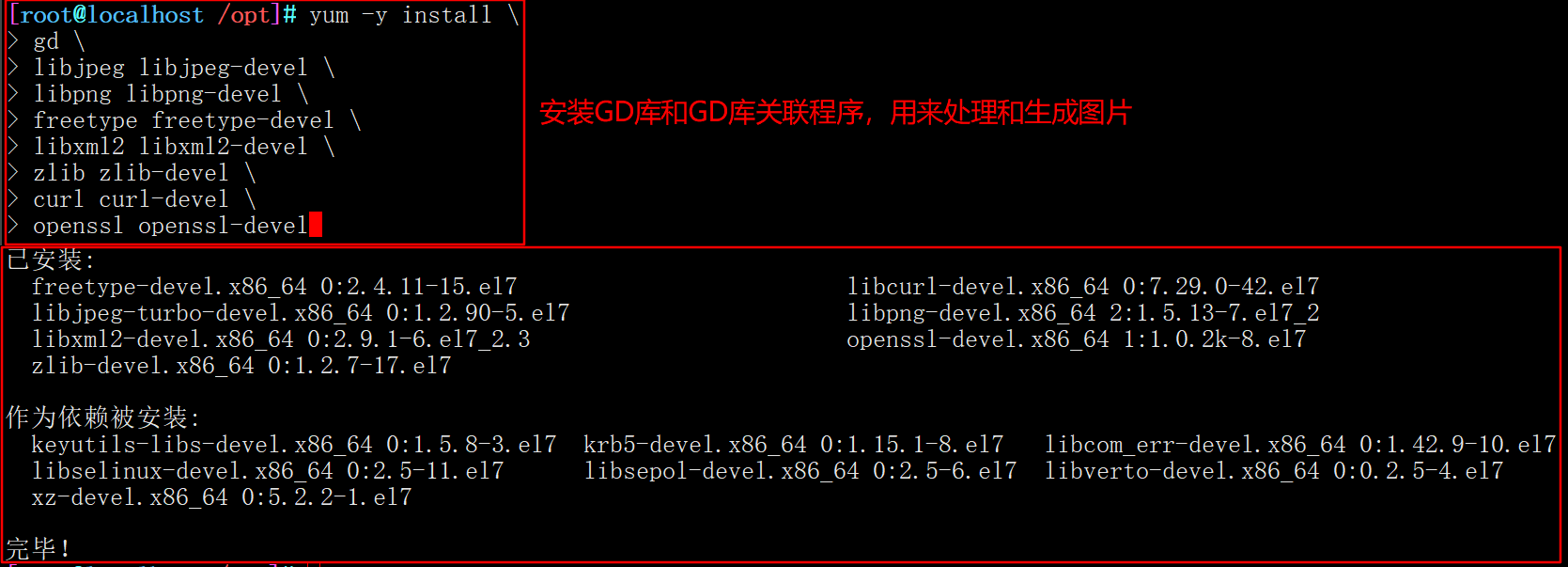
3. Configure software modules
cd /opt tar jxvf php-7.1.10.tar.bz2 cd /opt/php-7.1.10/ ./configure \ --prefix=/usr/local/php7 \ #Specify the installation path for the PHP program --with-apxs2=/usr/local/httpd/bin/apxs \ #Specify the file location of the apxs module support program provided by the Apache httpd service --with-mysql-sock=/usr/local/mysql/mysql.sock \ #Specify the storage path for the mysql database connection file --with-config-file-path=/usr/local/php7 #Set PHP profile php. Location where ini will be stored --with-mysqli \ #Add to MySQL Extended support #The mysqli extension technology not only calls MySQL stored procedures and handles MySQL transactions, but also makes accessing the database more stable --with-zlib \ #Supports zlib functionality, providing data compression --with-curl \ #Turn on curl extensions to implement Get download and Post request methods for HTTP --with-gd \ #Activate support for the gd Library --with-jpeg-dir \ #Activate support for jpeg --with-png-dir \ #Activate png support --with-freetype-dir \ --with-openssl \ --enable-mbstring \ #Enable multi-byte string functionality to support code like Chinese --enable-xml \ #Open Extensibility Markup Language Module --enable-session \ #Conversation --enable-ftp \ #Text Transfer Protocol --enable-pdo \ #function library --enable-tokenizer \ #Token Interpreter --enable-zip #ZIP Compression Format
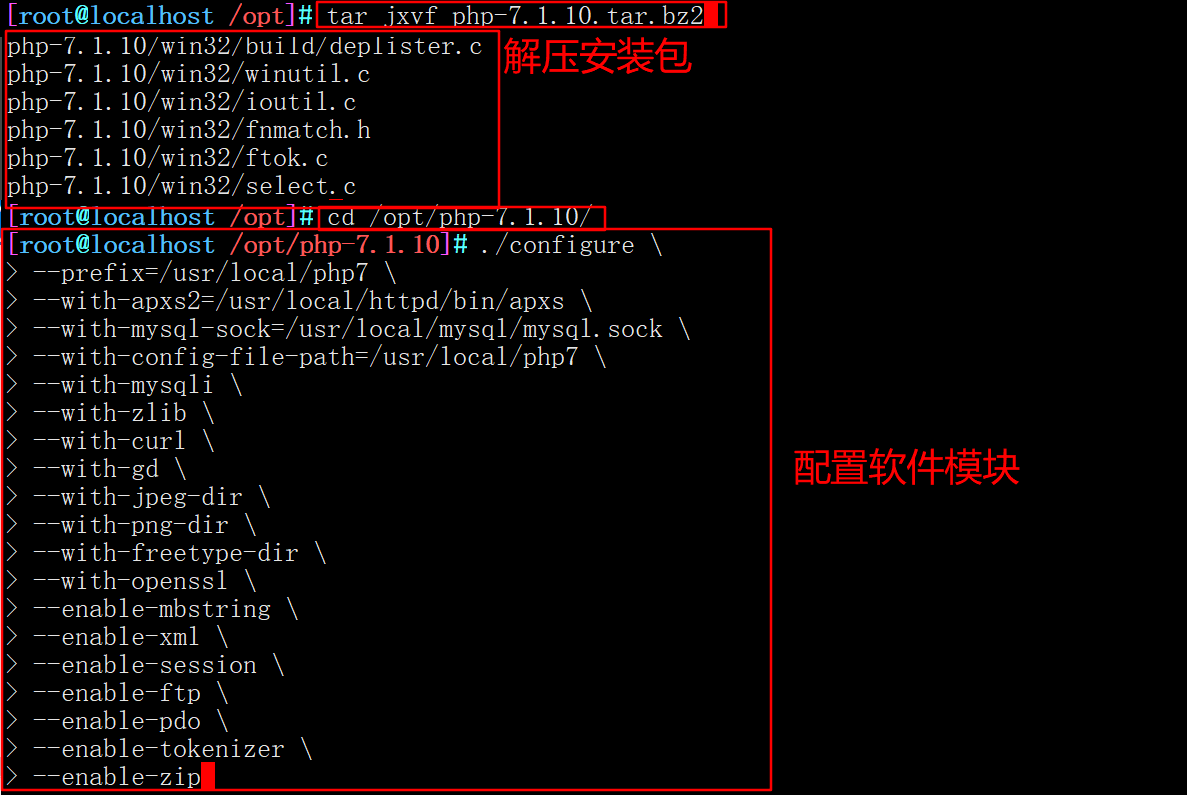
4. Compile and Install
make -j 4 && make install

5. Copy the template file as the main configuration file for PHP and modify it
cp /opt/php-7.1.10/php.ini-development /usr/local/php7/php.ini #Use PHP when testing the environment. Ini-development file, while PHP is used in production environments. Ini-production file vim /usr/local/php7/php.ini --1170 That's ok--modify mysqli.default_socket = /usr/local/mysql/mysql.sock --939 That's ok--Uncomment, Modify date.timezone = Asia/Shanghai

6. Optimize placing PHP executable files in directories of path environment variables for system identification
ln -s /usr/local/php7/bin/* /usr/local/bin/ php -m #See which modules PHP loads
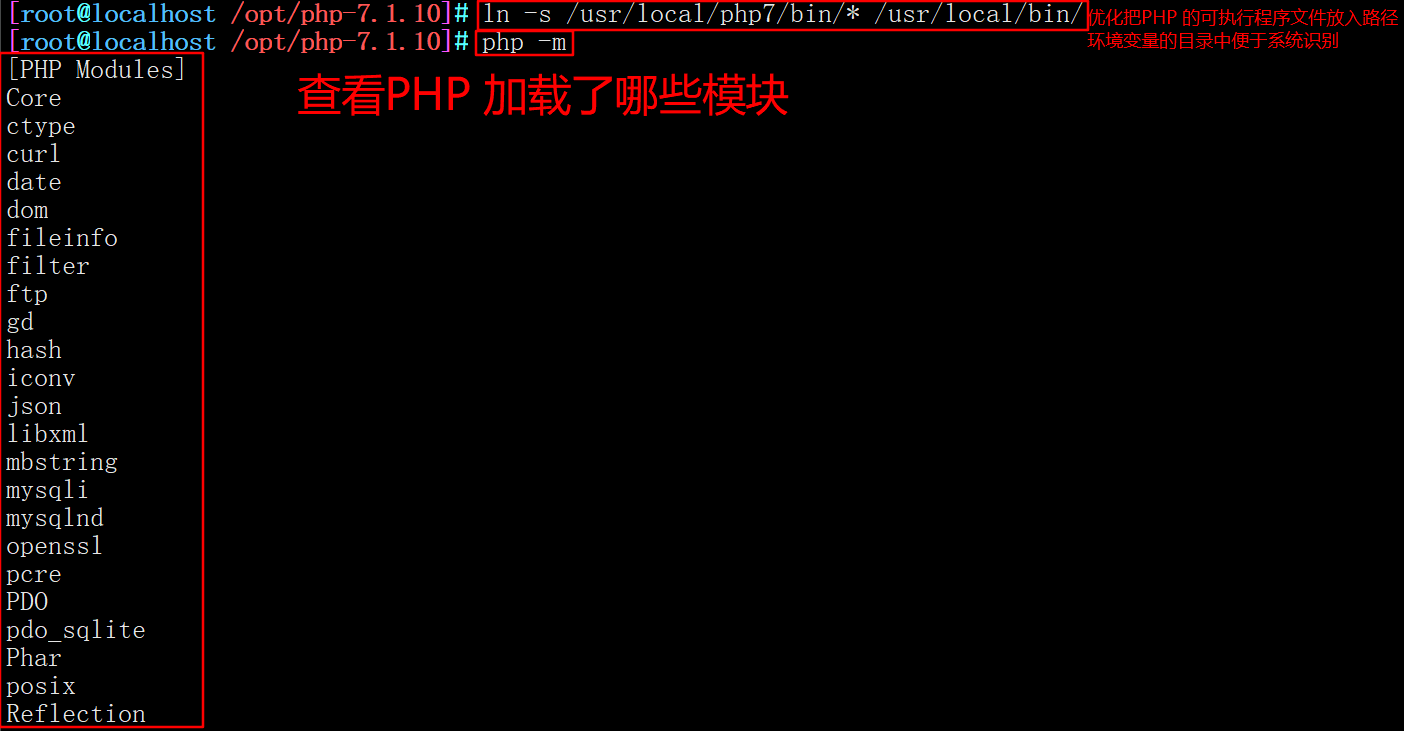
7. Modify the configuration file of the httpd service so that apache supports PHP
vim /etc/httpd.conf --393 That's ok--Insert the following AddType application/x-httpd-php .php AddType application/x-httpd-php-source .phps --256 That's ok--Modify Home Page File Name Settings DirectoryIndex index.html index.php ---Check support php7 Does the module exist------ LoadModule php7_module modules/libphp7.so

8. Verify the PHP test page
rm -rf /usr/local/httpd/htdocs/index.html vim /usr/local/httpd/htdocs/index.php <?php phpinfo(); ?> systemctl restart httpd.service Browser Access http://192.168.80.10

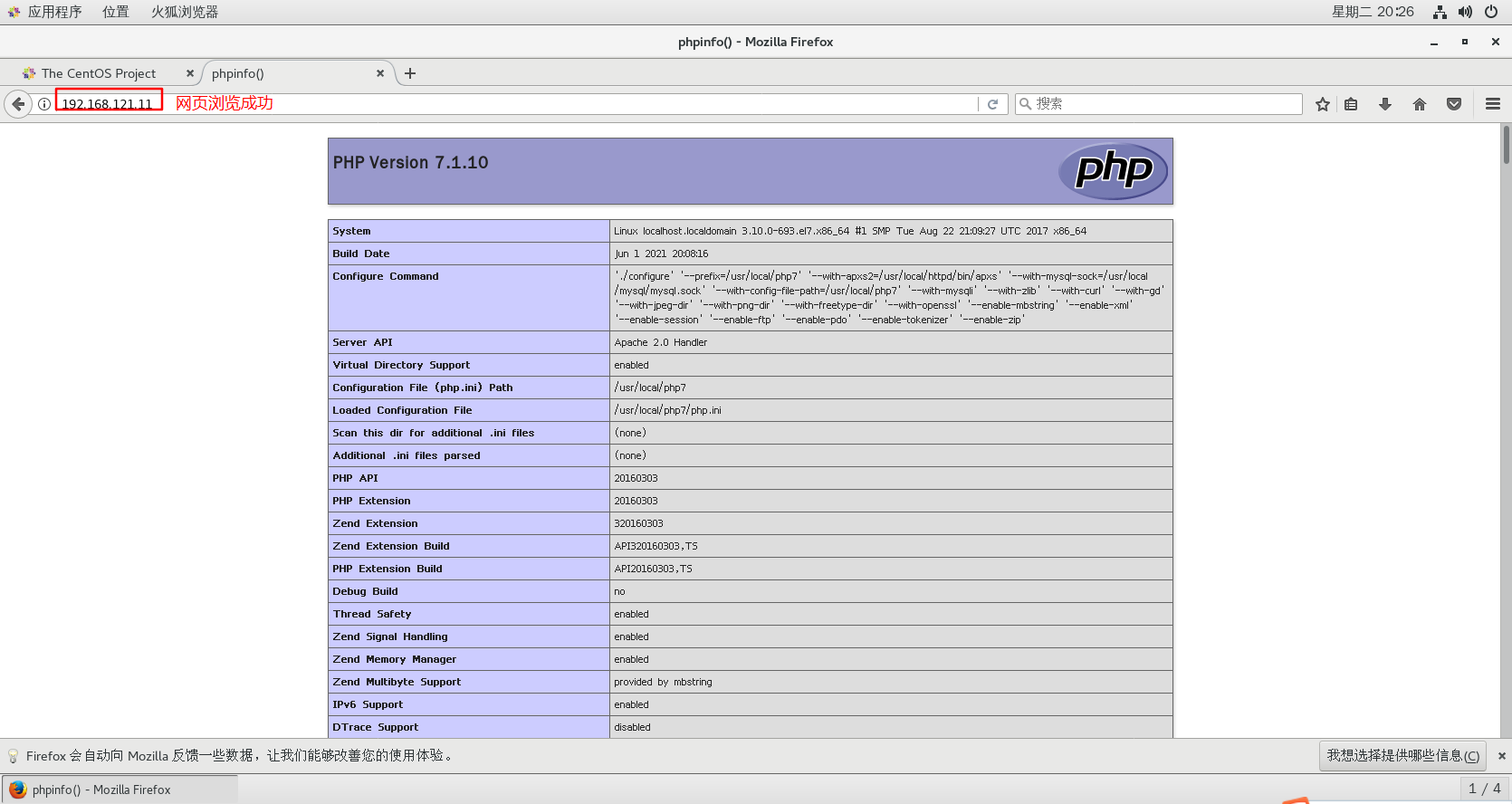
5. Installation Forum
1. Create a database and authorize it
mysql -u root -p CREATE DATABASE bbs; #Create a database GRANT all ON bbs.* TO 'bbsuser'@'%' IDENTIFIED BY '666'; #Grant bbsuser permissions to all tables in the bbs database and set the password 666 flush privileges; #Refresh Database show databases;
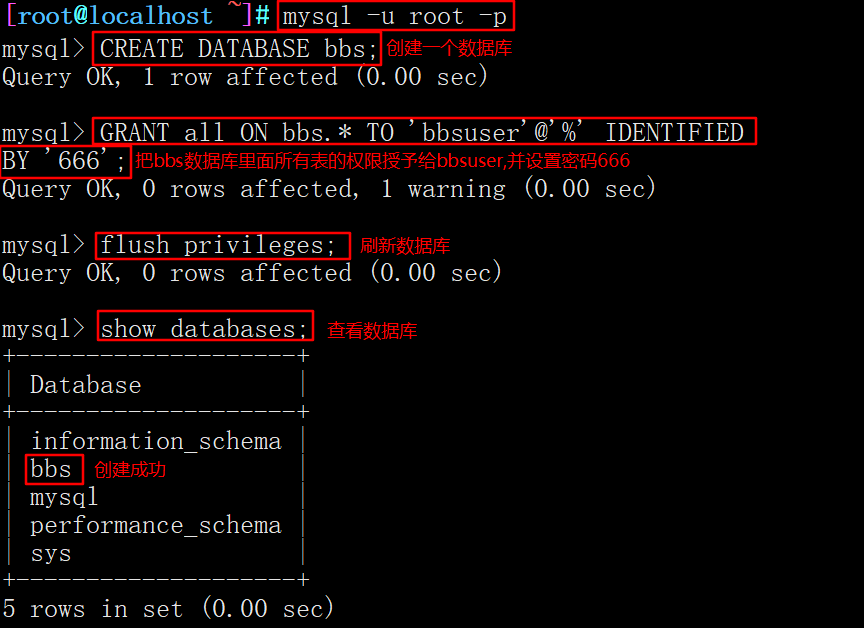
2. Unzip Forum Compressed Pack
unzip /opt/Discuz_X3.4_SC_UTF8.zip -d /opt/dis cd /opt/dis/dir_SC_UTF8/ cp -r upload/ /usr/local/httpd/htdocs/bbs #Upload Site Update Package


3. Change the owner of the forum directory
ps aux #View that the username of the discovery forum process is daemon cd /usr/local/httpd/htdocs/bbs chown -R daemon ./config chown -R daemon ./data chown -R daemon ./uc_client chown -R daemon ./uc_server/data

4. Browser Access Validation
Forum Page Access http://192.168.121.11/bbs ---------------------------------------------------------------------------------------------------------- Database Server: localhost ###localhost for local setup, how to fill in IP address and port number instead of local setup Database name: bbs Database user name: bbsuser Database password: 666 administrator account:root Administrator password:666 ---------------------------------------------------------------------------------------------------------- Forum Background Administrator Page http://192.168.80.10/bbs/admin.php

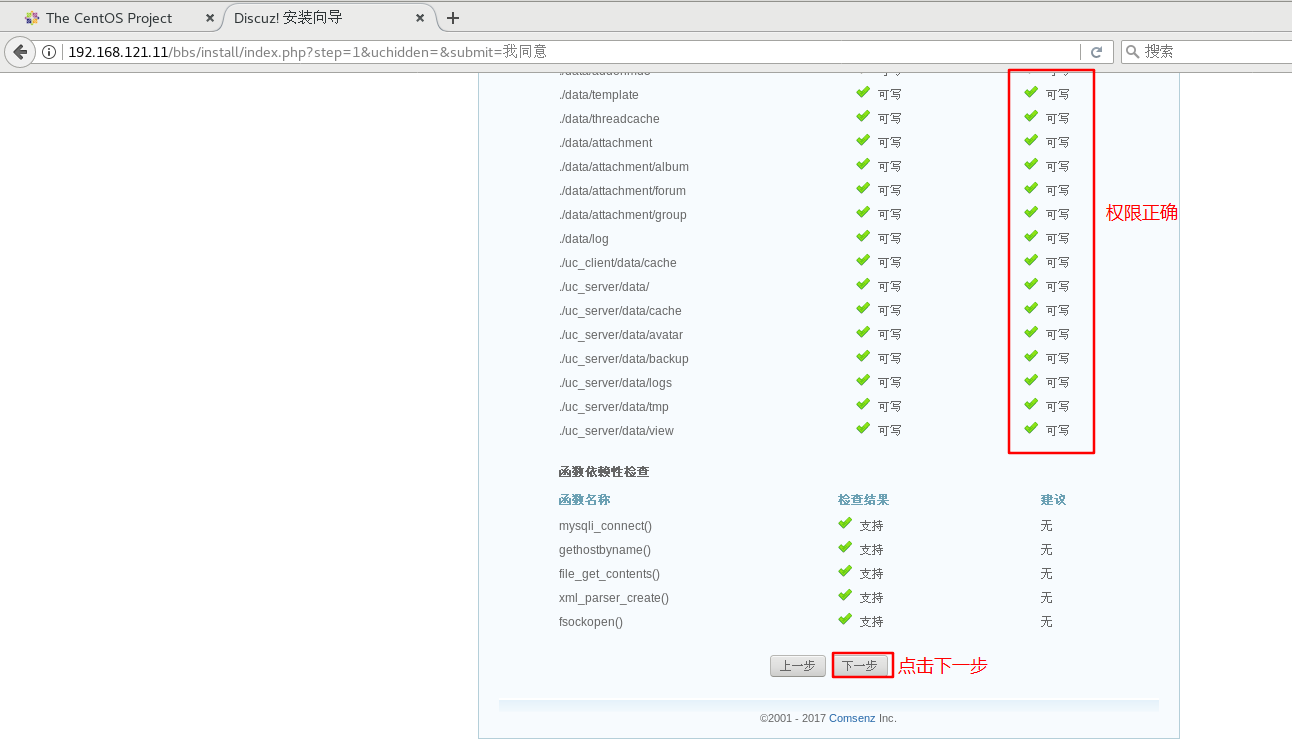
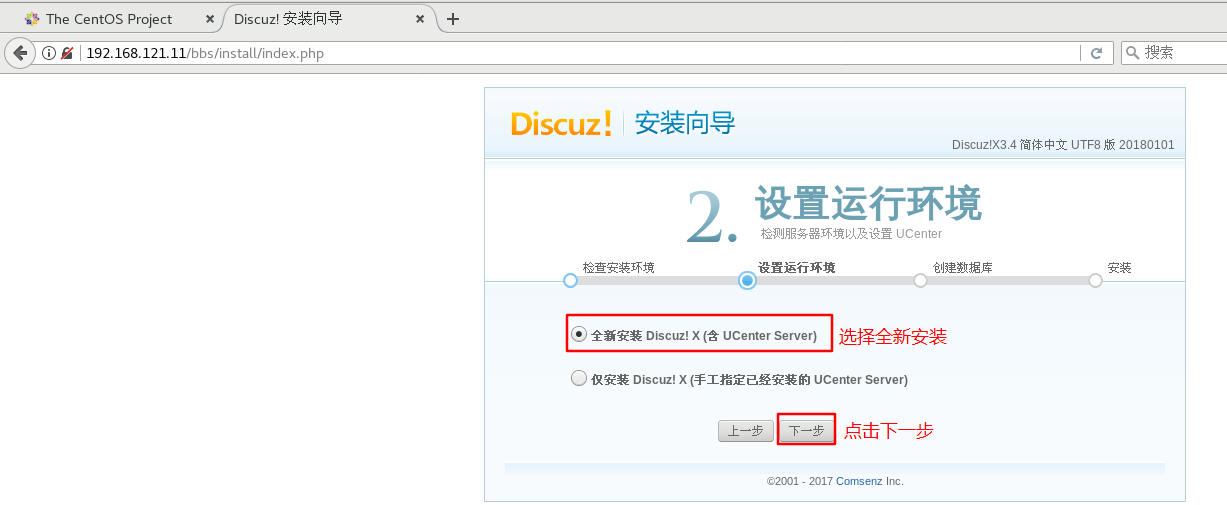
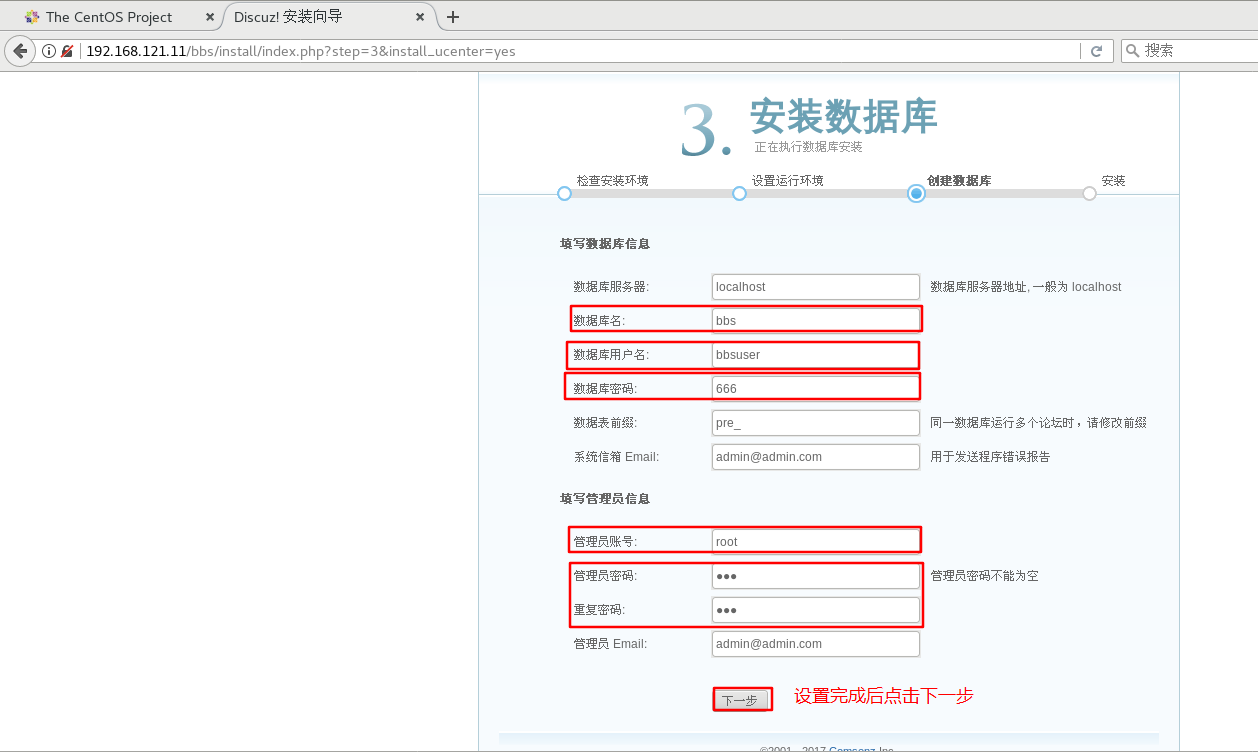

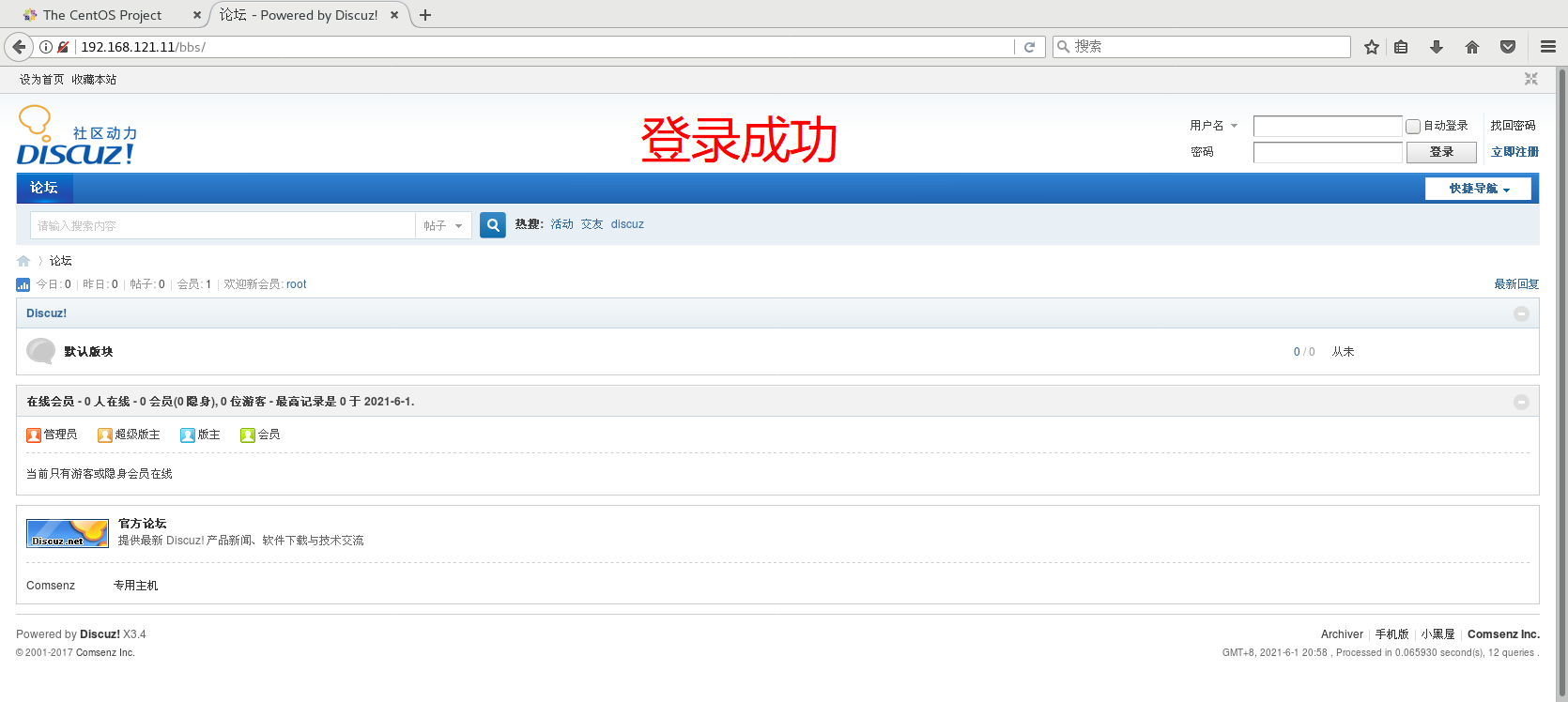
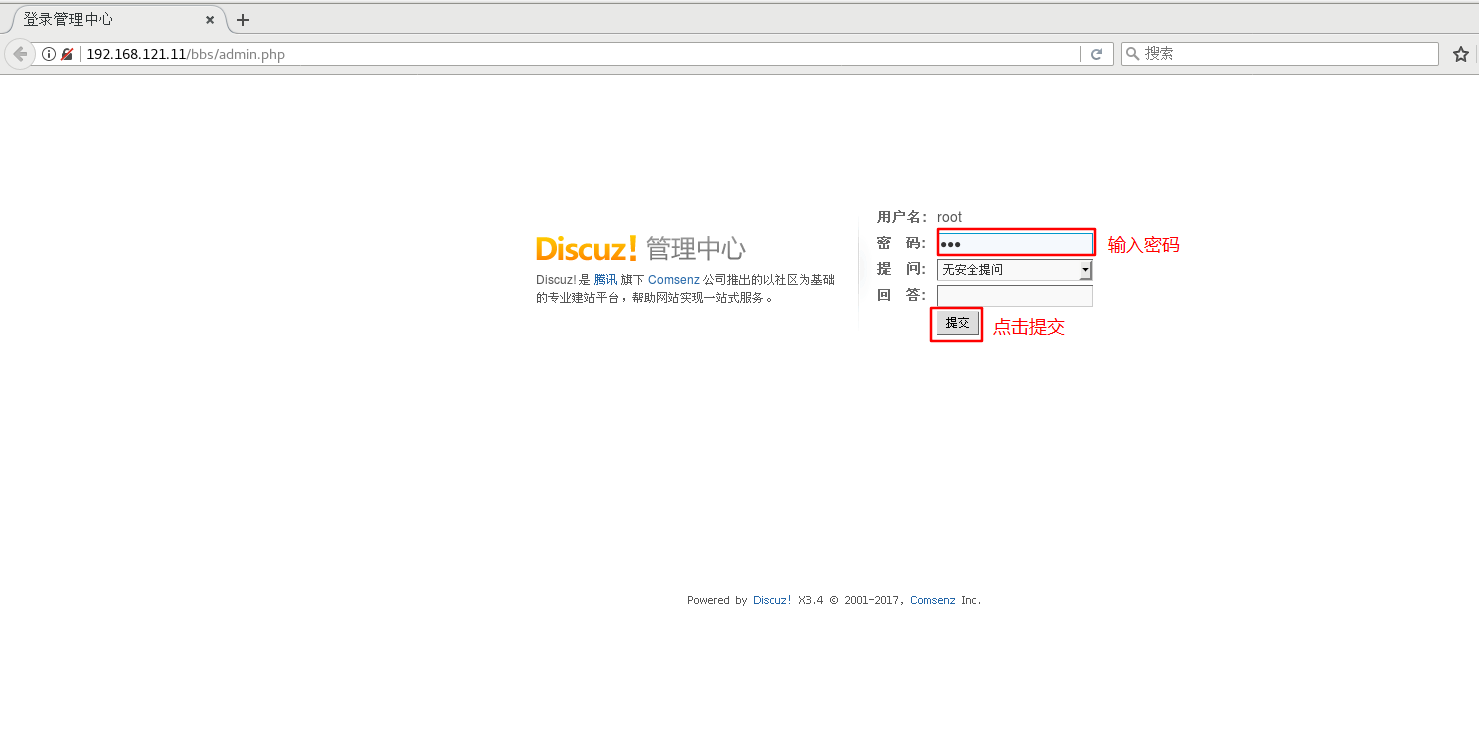
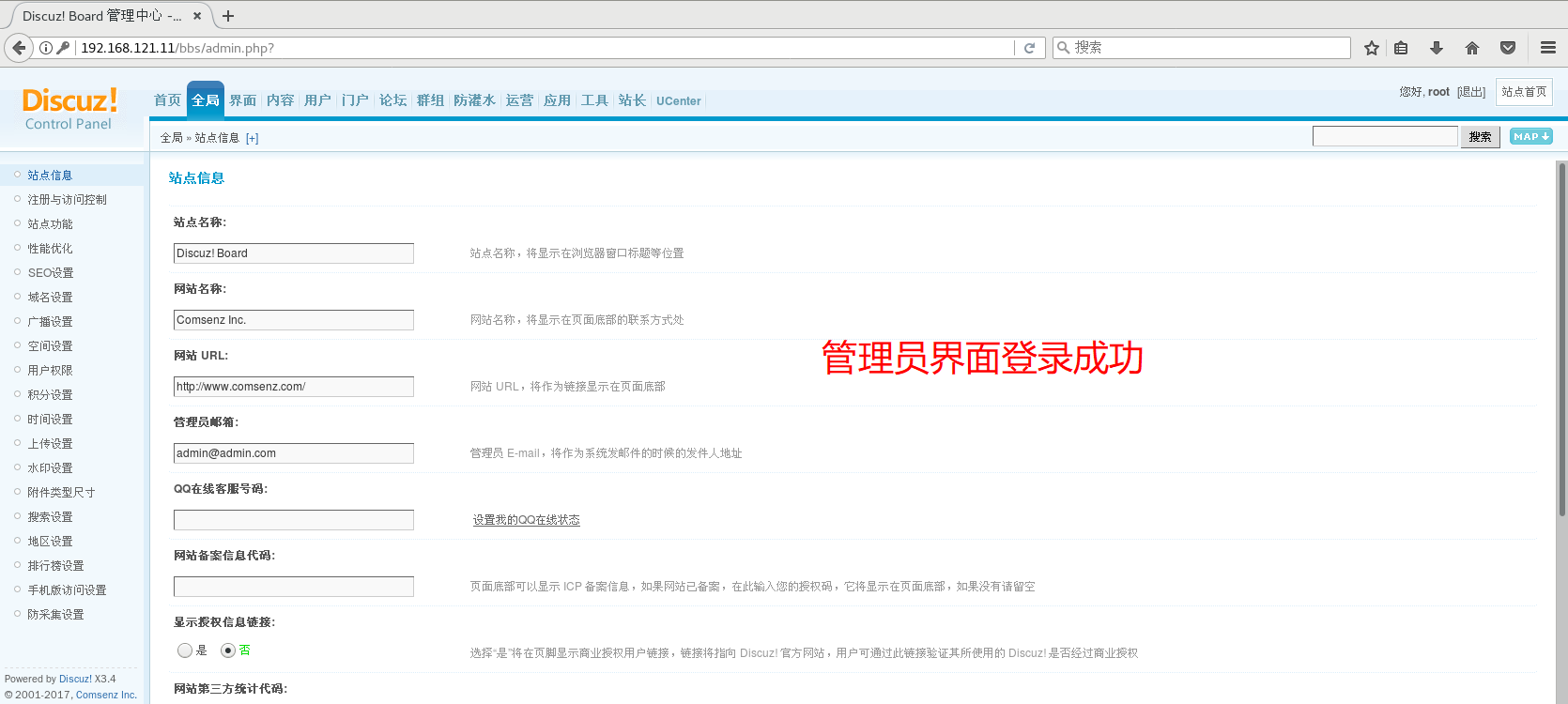
Installation package
Links: Installation package address
Extraction Code: 1122